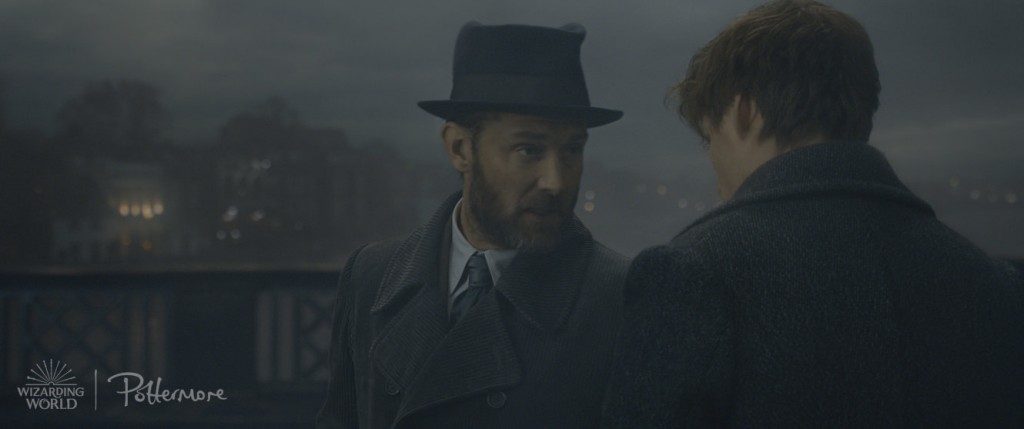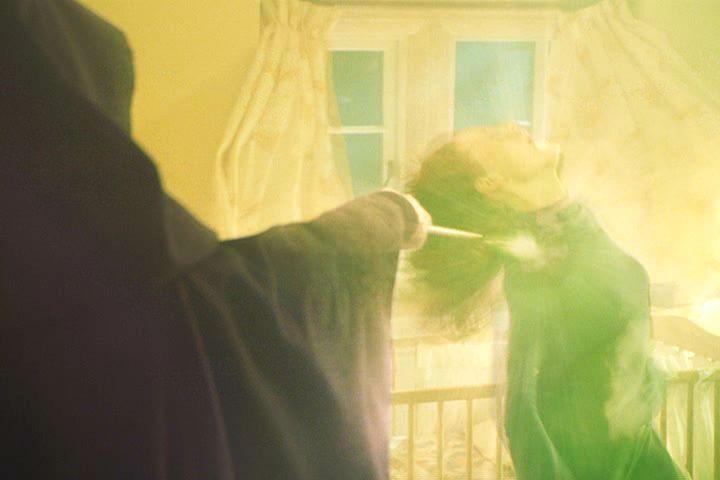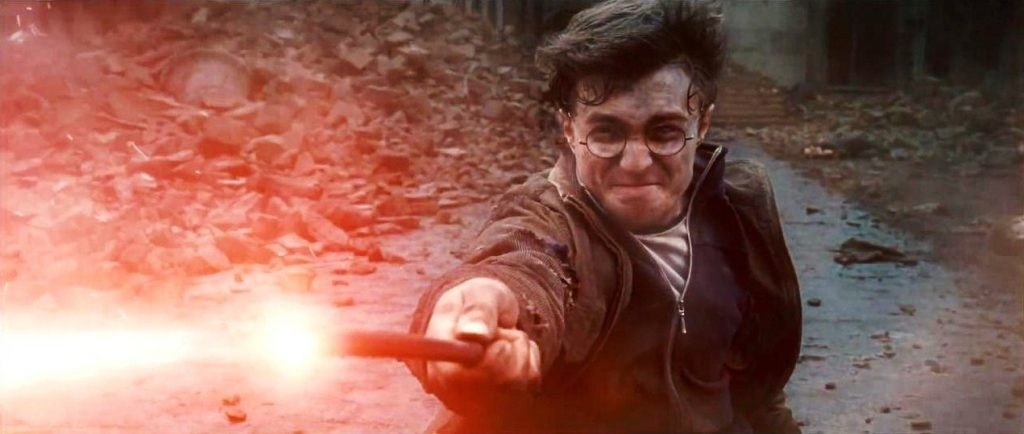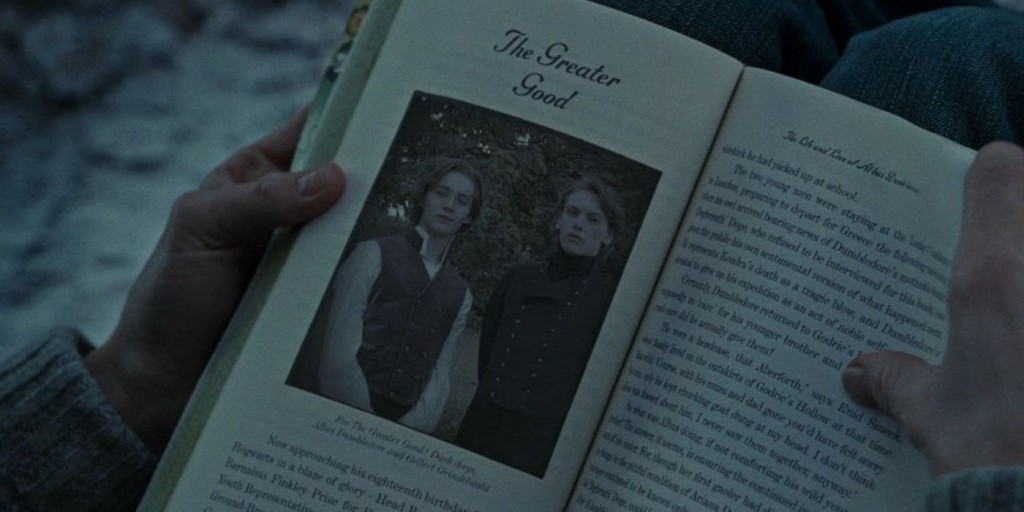Breaking Down the Blood Pact

Dec 04, 2018
Books, Fandom, Fans, Fantastic Beasts, Fantastic Beasts Movie, FAQs, Films, Fun, Harry Potter and the Deathly Hallows, J.K. Rowling, News, Potter News
Aside from the identity of Aurelius Dumbledore, one of the larger questions raised by Fantastic Beasts: The Crimes of Grindelwald regards the significance, and magical rules, of the Blood Pact.
During the course of the film, fans learned that Gellert Grindelwald and Albus Dumbledore entered into the binding agreement, which is what prevents them from challenging one another openly. This explains the frustrating phrase uttered by Dumbledore to Newt, when he states: “I cannot move against Grindelwald. It has to be you.”
Astute fans have wondered, however, how this fits into J.K. Rowling’s story and timeline. Harry Potter and the Deathly Hallows established that Aberforth, Grindelwald and Albus fought when a family meeting was convened to discuss the care of Ariana Dumbledore and that they did not fight again until their fateful duel in 1945. How then did they fight in the first place? The pact was probably made beforehand, when Grindelwald and Dumbledore were still on good terms. Wouldn’t this be inconsistent with those events?
The explanation is actually simple enough. Dumbledore says that he “cannot move against Grindelwald.” This implies intentionality. It implies instigation. It implies an offensive attack. It does not, however, rule out the possibility that Aberforth, or even Ariana, started the fight which resulted in her death. In that scenario, both Grindelwald and Dumbledore would be reacting to the actions of another and engaging in a defensive fight that was started by neither party in the pact nor specifically directed toward either party in the pact.
This might seem like an argument in semantics, but the subtle distinction is actually quite important. We know from the Harry Potter series that Rowling steeps the rules of magical engagement in such nuances. For example, Harry was protected by the sacrifice of his mother, Lily, rather than his father, James. Both died for their son, but only one imparted to him the magical protection that would later prove so important. Voldemort was going to kill James regardless, and James was not given a choice. Lily, however, was offered an out. Voldemort gave her the opportunity to step aside because his faithful follower Severus Snape begged him to relent and spare her. She chose not to move. She chose death when she could have lived, and that made the difference.
Likewise, the magical rules of wandlore are exceedingly subtle and specific. Even Voldemort failed to consider them fully. He wrongly believed Snape to be master of the Elder Wand because Snape had been the one to kill Dumbledore. He assumed that mastery required total domination. That proved not to be the case. Draco Malfoy was, for a time, rightful master of the wand because he disarmed Dumbledore first. Disarming was all that was needed in order to trigger the transference of loyalty. This worked in Harry’s favor when he later disarmed Draco and assumed mastery of the Elder Wand himself, rendering it ineffective for Voldemort during the Battle of Hogwarts and noncompliant during their final duel.
It would be no surprise, then, if Grindelwald and Dumbledore’s first fight was made possible through similarly subtle magical distinctions.
It is also possible, though probably less likely, that they formed the Blood Pact after the fight which left Ariana dead. Perhaps both were so moved by the devastation wrought in the moment, that they regretfully agreed never to confront one another again before parting ways. Only later would both have realized the repercussions of such a constraining act.
This does not seem consistent with Grindelwald’s character as we know it, since we have, so far, observed no genuine empathy or affection in the man. It would not be like him to take any action that proved of no benefit to himself. While Dumbledore and he were still allies, the Blood Pact would have ensured they remained so. But after their relationship, whatever it was, imploded, he had no motive for acting as a friend. In Grindelwald’s estimation, if someone is not wholly with him, they are wholly against him. This only makes sense if the young Grindelwald was less manipulative and cold-hearted than we know him to be, and his steely, merciless resolve hardened in him some time later.
Whenever the two entered into the Blood Pact, it will continue to be a significant factor going forward. The Blood Pact restrains Grindelwald from actively challenging Dumbledore, and this is what necessitates his tenuous alliance with Credence–and why he went to such great lengths to carefully woo Credence to his side. He needs Credence to go after Dumbledore, since he cannot. In the same way, Dumbledore cannot move against Grindelwald. This is why he needed Newt to pursue Credence and, by extension, the dark wizard pulling the strings.
However, now that Dumbledore has the amulet which holds the Blood Pact, the trajectory of the upcoming films seems set. Dumbledore will aim to break or reverse the binding magic of the pact, and this could take them all over the wizarding world as they pursue answers. (Will they need another magical object, as was required for the destruction of the Horcruxes? Is this where Dumbledore first got the idea?) Meanwhile, Grindelwald will be grooming Credence for a confrontation with Dumbledore.
Which explanation of the Blood Pact’s creation do you think most likely, Potter fans? Are you as impressed as we are by the intricacies in Rowling’s story?









